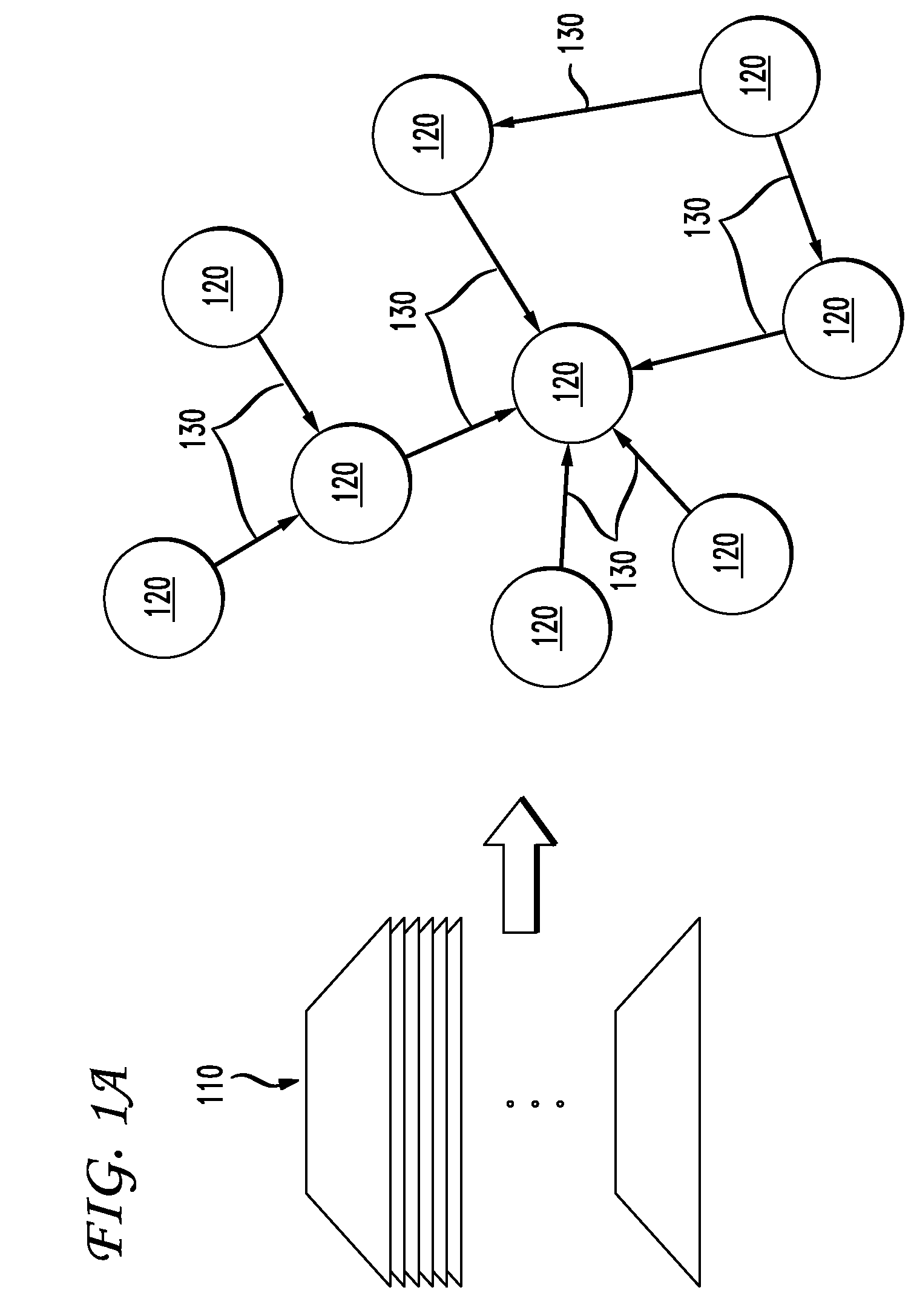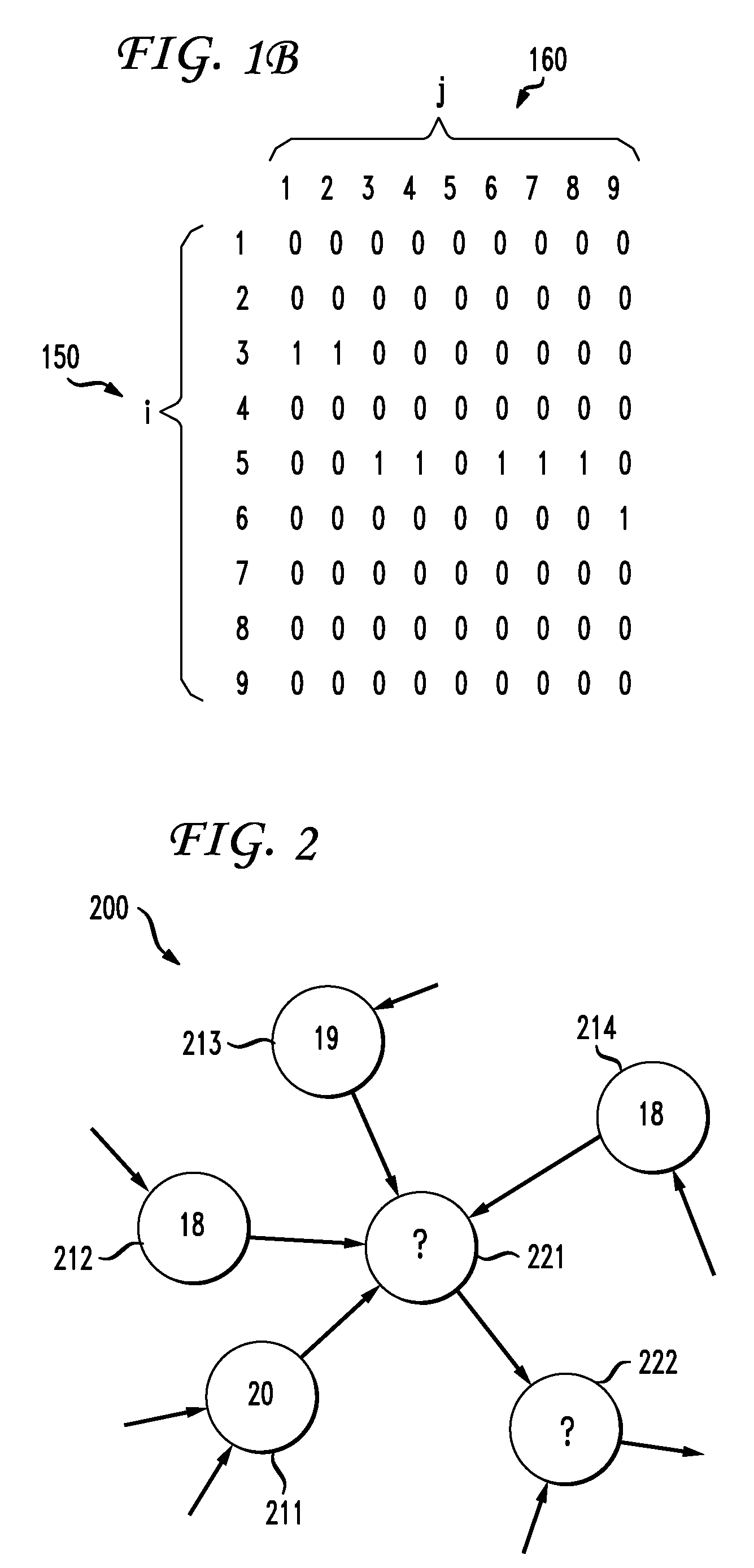Link-based classification of graph nodes
a graph node and link-based technology, applied in the field of object classification, can solve the problems of inferring some grouping among objects, fundamental problems, and problems such as inferring such structure and classifying objects,
- Summary
- Abstract
- Description
- Claims
- Application Information
AI Technical Summary
Problems solved by technology
Method used
Image
Examples
Embodiment Construction
[0029]In preferred embodiments of the present invention, classification labels can be inferred for objects that have an explicit structure between them. Such objects can be naturally modeled as nodes of a graph, such as a directed multigraph, with edges forming the explicit structure between nodes. A multigraph, as used herein, refers to a graph where there can be more than one edge between two nodes and there can be different kinds of nodes. The preferred embodiments of the present invention are directed to labeling unlabeled nodes based on the explicit structure formed by the edges. As a result, the preferred embodiments apply uniformly to all applications. In the case where additional features are available, the additional features can be used to improve the results of the classifications performed. The preferred embodiments can be scaled for large input sizes and can be implemented using (semi-)supervised learning so that classification labels on nodes are inferred from those of...
PUM
 Login to View More
Login to View More Abstract
Description
Claims
Application Information
 Login to View More
Login to View More - R&D
- Intellectual Property
- Life Sciences
- Materials
- Tech Scout
- Unparalleled Data Quality
- Higher Quality Content
- 60% Fewer Hallucinations
Browse by: Latest US Patents, China's latest patents, Technical Efficacy Thesaurus, Application Domain, Technology Topic, Popular Technical Reports.
© 2025 PatSnap. All rights reserved.Legal|Privacy policy|Modern Slavery Act Transparency Statement|Sitemap|About US| Contact US: help@patsnap.com



